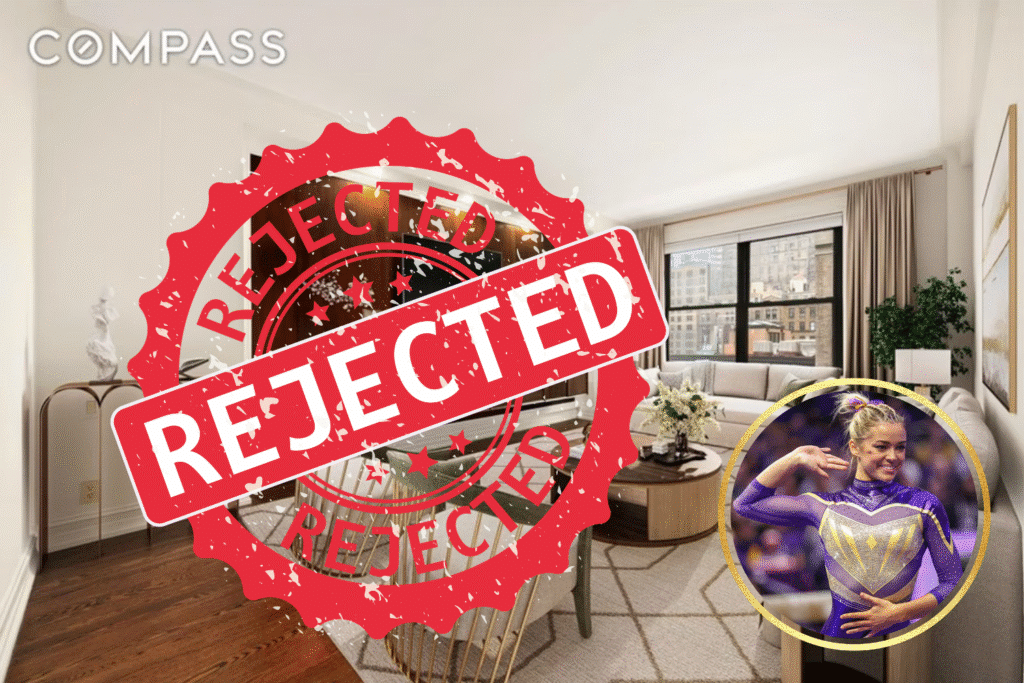People often assume celebrities can buy whatever they want, but TikTok star Olivia Dunne just found out that’s not always true in New York City. The 22-year-old influencer faced rejection from a New York co-op board—even after making an all-cash offer on Babe Ruth’s former $1.6 million apartment. It’s a wild twist in what seemed like a done deal.
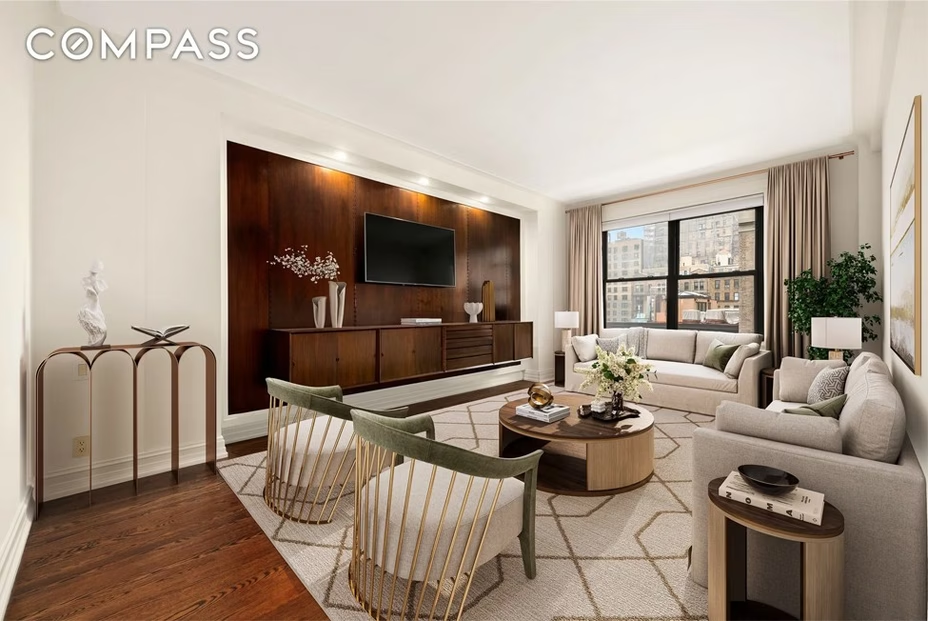
Olivia Dunne set her sights on living in a baseball legend’s home, picturing those soaring ceilings and all that history. She hired an interior designer and had her plans lined up, only for the co-op board to shut things down at the last minute.
NYC co-op boards hold serious power over who gets to move in, and their decisions can be surprisingly secretive. Even with millions of followers and cash in hand, a dream apartment can slip away for reasons that aren’t always obvious.
Key Takeaways
- Olivia Dunne lost out on Babe Ruth’s former apartment despite her $1.6 million all-cash offer.
- NYC co-op boards can reject buyers regardless of their finances or celebrity status.
- The case highlights just how exclusive—and unpredictable—the Manhattan housing market can be.
Olivia Dunne’s Bid for Babe Ruth’s Iconic Apartment
Olivia Dunne put in an all-cash offer for the legendary baseball player’s old New York City home. She brought her boyfriend Paul Skenes into the process and even hired an interior designer while waiting for the final decision.
Making the All-Cash Offer
Olivia Dunne felt excited about making her first big real estate purchase. At just 22, she wanted something unique—Babe Ruth’s former apartment in New York City.
TikTok Star Olivia Dunne put a cash offer on the New York unit for $1.6 million. She decided to pay the full price upfront, hoping that would seal the deal.
Why she chose cash:
- Better chance of acceptance
- Faster closing process
- No financing complications
- Show serious commitment
Olivia believed a cash offer would make her stand out. She saw it as her best shot at locking down the iconic property.
Partnering With Paul Skenes
Pittsburgh Pirates pitcher Paul Skenes got involved in the apartment search. Olivia and Paul toured the space and met with the interior designer together.

Both of them got excited about living in such a historic spot. Paul supported Olivia’s decision, and they started planning their future in New York around this place.
Their partnership included:
- Joint apartment visits
- Shared design meetings
- Combined future planning
- Mutual excitement about the purchase
Interior Designer Plans
Olivia felt confident enough to hire an interior designer before the deal even closed. She had zero interest in dragging her old college furniture into Babe Ruth’s legendary home.
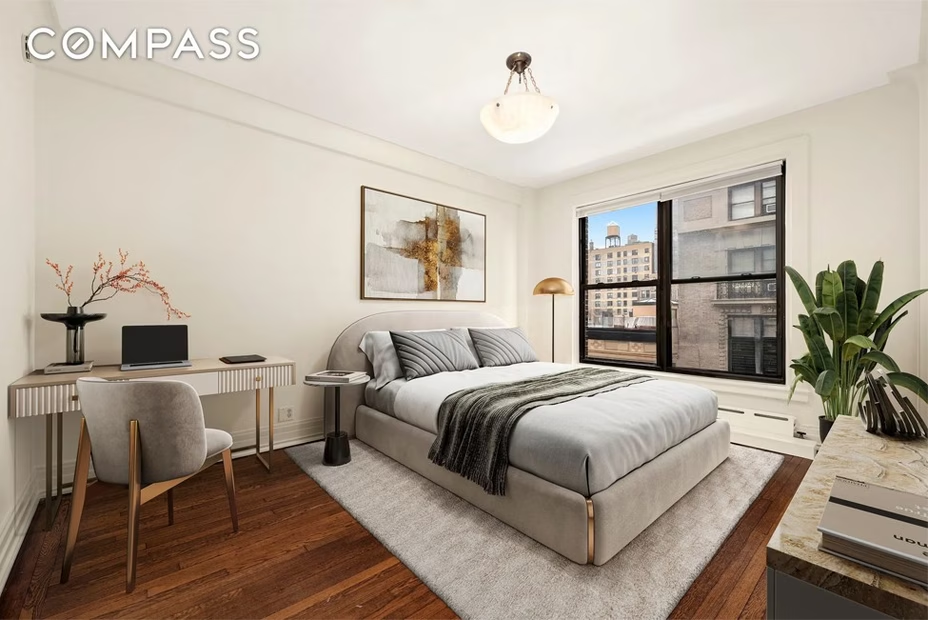
Her realtor seemed sure the sale would go through, so Olivia and Paul met with design professionals to brainstorm ideas.
Olivia even joked it’d be “criminal” to bring cheap furniture into a place with that much history. She wanted to furnish it in a way that honored the apartment’s legacy.
Design considerations:
- Historical significance of the space
- Luxury furnishings to match the apartment’s status
- Professional consultation for the best results
- Respectful approach to the property’s legacy
Social Media Announcements
Olivia’s excitement spilled over onto social media. Livvy Dunne struck out in her bid after she put it on social media, ticking off co-op board.
She admitted she was “telling everybody” about her plans. As a content creator, sharing big life moments just felt natural.
Her millions of followers are used to seeing her daily updates, so she treated this real estate adventure the same way. But this openness might have backfired.
Some co-op boards really value privacy and discretion, and Olivia’s public posts may have rubbed them the wrong way.
The Upper West Side Apartment’s Legendary History
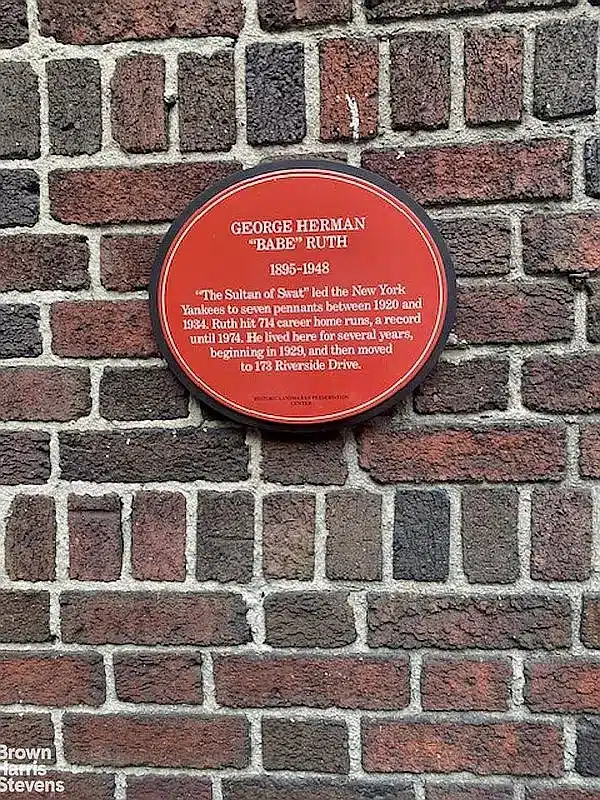
This apartment carries nearly two decades of baseball history. The Upper West Side apartment where Babe Ruth lived from 1920 to 1940 saw the rise of the Yankees and became home to one of baseball’s most famous families.
Babe Ruth’s Years in the Home (1920–1940)
George Herman Babe Ruth Jr. moved into this Upper West Side residence back in 1920. It wasn’t just any apartment—it became his home base during the most legendary years of his career.

The original space was a sprawling 12-room unit with sweeping views of Riverside Park. Plenty of room to spread out, that’s for sure.
The 1920s marked the birth of the Yankees’ dynasty, and this apartment gave him a place to unwind after smashing home runs at Yankee Stadium.
The walls probably heard more than a few celebrations and quiet moments. Ruth called this place home during his peak with the Yankees, a time when he was changing baseball forever.
The Ruth Family: Claire Merritt Ruth and Julia Ruth Stevens
The apartment became a true family home thanks to Claire Merritt Ruth, Babe’s devoted wife. She created a warm and welcoming atmosphere.
Julia Ruth Stevens, their adopted daughter, filled the rooms with laughter. She later shared memories of listening to “The Green Hornet” radio show with her father while gazing out at Riverside Park.
Claire and Babe loved entertaining guests. They often hosted dinner parties, with a maid and cook helping out behind the scenes.
A New York Yankees Legacy
The apartment’s connection to the New York Yankees is part of what makes it so special. Babe Ruth didn’t just live here—he helped build a dynasty in these very rooms.
Ruth would invite Yankees players who’d been traded to other teams for home-cooked meals when they visited New York. The apartment became a gathering place for legends needing a taste of home.
Victories were planned and celebrated here during the Yankees’ golden era. The walls absorbed stories, strategies, and dreams from America’s most beloved baseball team.
Transformation of the Apartment Over Time
The apartment has changed a lot since Babe Ruth’s days, but its character is still strong. The original 12-room layout got split into two separate apartments to fit modern needs.
The current three-bedroom, 2.5-bathroom setup keeps those soaring ceilings and rich wood flooring as a nod to the past.
The modern kitchen now features white cabinetry, gray countertops, and stainless steel appliances. The design blends contemporary style with historic charm.
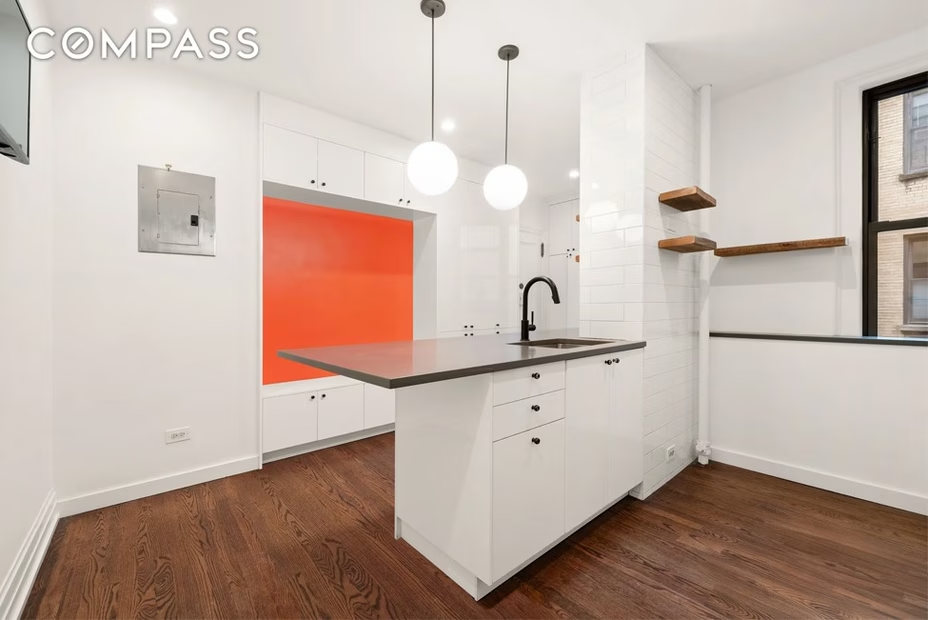
Built-in storage makes the most of every inch. The apartment’s “fabulous character” still shines, even after all these years.
Inside the Apartment: What Makes Babe Ruth’s Former Home Special
This Upper West Side apartment blends stunning original features with modern upgrades. It’s got breathtaking views of Riverside Park and somehow manages to feel both historic and luxurious.
Luxurious Layout and Design
The three-bedroom, 2.5-bathroom layout makes smart use of space. The original home was a massive 12-room unit where Babe Ruth lived with his family from 1920 to 1940.
Soaring ceilings grab attention right away. Rich wood flooring runs throughout, adding warmth and a touch of elegance.
Built-in storage pops up in multiple rooms, with custom cabinetry that’s both stylish and practical.
The living area boasts a large window for plenty of natural light. It flows into a chic dining space that’s perfect for entertaining.
Key Features and Upgrades
The kitchen combines sleek white cabinets with gray countertops. Stainless steel appliances include a vented gas range, side-by-side fridge, and dishwasher.
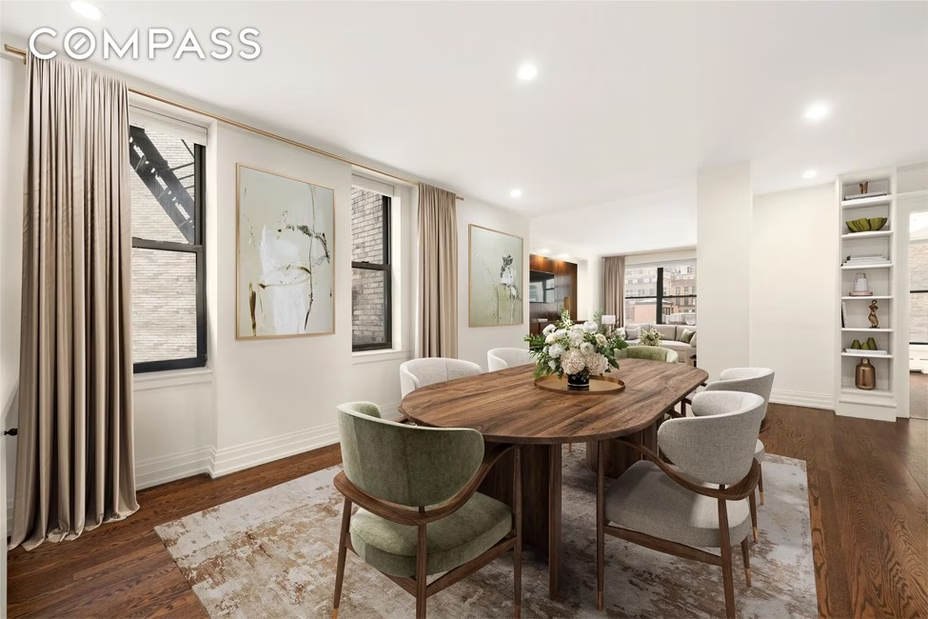
A breakfast bar offers a casual spot for meals, while the service entrance features floor-to-ceiling cabinetry and an in-unit washer-dryer.
The primary bedroom easily fits a king-sized bed and extra seating. Three closets—including a walk-in and linen cupboard—provide ample storage.
The main bathroom has an oversized tub and separate shower. Modern fixtures blend with the apartment’s classic details.
Views and Connections to Riverside Park
Views of Riverside Park are visible from several windows. Ruth’s adopted daughter Julia often recalled looking out over the park while listening to radio shows with her dad.
The location puts residents right next to one of Manhattan’s most beloved green spaces. Riverside Park offers walking paths, recreation, and a break from city noise.
This Upper West Side address is just steps from the Hudson River. The building itself has “fabulous character” and is among the area’s most desirable spots.
Why the NYC Co-Op Board Rejected Olivia Dunne
The co-op board turned Olivia Dunne down mainly because of her social media presence and worries about her public lifestyle clashing with the building’s quiet vibe. Money wasn’t the problem—privacy and personality were the real sticking points.
Celebrity Oversharing on Social Media
Social media posts can really change the outcome of a co-op application. Dunne made a big misstep when she shared her apartment purchase on Instagram.
One resident revealed the board’s frustration: “She messed up. The board got pissed because she put it on her Instagram.”
NYC co-op boards put a premium on discretion. Buying into a co-op means joining a community that guards its privacy closely.
Dunne’s TikTok fame and constant online presence set off alarm bells. The board worried about photographers, fans, and media attention shaking up their quiet building.
Co-op boards hate when potential buyers:
- Post about pending purchases online
- Share building details publicly
- Bring unwanted attention to the property
Her Instagram video showing off the beach while talking about her apartment purchase really broke the unwritten privacy rules co-op boards care about.
Public Persona vs. Neighborhood Culture
Celebrity status doesn’t always help in exclusive NYC buildings. The Upper West Side building values low-key living over social media stardom.
Residents seemed divided about having a TikTok star as a neighbor. One resident said they thought Dunne looked like a child when they saw her in person.
Another resident sounded disappointed about the rejection, saying “I wish her well. Who knows why they rejected her.”
The board probably worried about:
- Paparazzi gathering outside the building
- Fans disrupting other residents
- Media attention affecting property values
- Lifestyle differences between influencers and longtime residents
Co-op boards in NYC really work to protect their buildings’ character. A 1915 prewar building tends to attract people who want old-world elegance and privacy.
Financial and Non-Financial Factors
Money wasn’t the problem—Dunne’s finances checked out. She made an all-cash offer on the $1.59 million apartment, which should impress most co-op boards.
The 22-year-old gymnast had the funds to close fast. Boards usually love cash offers because they mean less risk.
But NYC co-op boards consider far more than money:
| Financial Factors | Non-Financial Factors |
|---|---|
| Cash offer strength | Privacy concerns |
| Income stability | Lifestyle compatibility |
| Debt-to-income ratio | Building culture fit |
| References | Social media presence |
Dunne even joked about the rejection, saying “they could have been Alabama fans, and I went to LSU.”
Co-op boards hold almost all the power to reject applicants. They don’t have to explain why, which makes the process pretty frustrating for buyers.
How NYC Co-Op Boards Work: Secrets and Surprises
NYC co-op boards control who can buy apartments in their buildings, and the approval process is a lot more involved than most expect. These boards operate differently than condos and have rules that surprise even seasoned buyers.
The Co-Op Approval Process Explained
When someone buys a co-op, they’re not actually buying real estate. They’re buying shares in a corporation that owns the building.
The co-op board reviews every single application. They want to see financial records going back years.
Required Documents:
- Tax returns (usually 2-3 years)
- Bank statements
- Employment verification
- Personal references
- Board package (often 100+ pages)
Applicants need to show they can afford monthly maintenance fees plus mortgage payments. Most boards want to see 1-2 years’ expenses saved after closing.
The board interview is the last step. They might ask about lifestyle, work hours, and plans for the apartment.
Here’s the kicker: Boards can turn down applicants for almost any reason. They don’t have to say why.
Some boards care a lot about noise. Others ask about travel habits or remote work.
Comparing Co-Ops and Condos in Manhattan
Co-ops make up about 75% of Manhattan’s apartment buildings. Condos are easier to buy but cost more.
Co-Op Rules:
- Board approval required
- Usually can’t sublet easily
- Monthly maintenance fees
- Restrictions on renovations
Condo Rules:
- No board approval needed
- Can rent out freely
- Monthly common charges
- More renovation freedom
Co-ops often want a bigger down payment—sometimes 20-25% instead of 10%.
Condos sell faster since there’s no board process. Buyers can close in 30-45 days, while co-ops often take 60-90 days.
The trade-off: Co-ops cost less per square foot but come with more strings attached. Condos offer more freedom but at a higher price.
Real Estate Insider Perspectives
Real estate agents know which boards are tough and which are chill. Some agents won’t show certain buildings to clients who might not make the cut.
Board Personality Types:
- Strict Financial Boards: Want high income and lots of savings
- Lifestyle Boards: Care about noise and building culture
- Celebrity-Friendly Boards: Welcome famous residents
- Traditional Boards: Prefer long-term residents
Some boards meet monthly, others quarterly. This can really drag out the approval timeline.
Insider tip: Buildings with lots of board rejections usually have lower sale prices. Buyers steer clear because it’s just too risky.
Co-op board members volunteer and live in the building themselves. They make calls based on what they think helps property values and daily life.
The most successful buyers treat board packages like job applications. They even research board members and building history before applying—smart move, honestly.
The Larger Impact: Celebrity Real Estate Struggles and Next Steps
This co-op board rejection shows how even famous athletes and influencers run into unique hurdles when buying luxury properties. The decision affects both Dunne and Skenes and highlights bigger issues with celebrity real estate purchases.
What’s Next for Olivia Dunne and Paul Skenes
People are probably curious about what’s next for this couple. Dunne hasn’t given up on her NYC dreams after this setback.
Current Options Include:
- Looking at other luxury apartments in Manhattan
- Considering condos instead of co-ops
- Exploring Brooklyn or Queens properties
- Waiting for different co-op opportunities
Skenes is still playing with the Pittsburgh Pirates, and his rookie season salary gives them plenty of options for their next try.
Chances are they’ll bounce back quickly. Celebrities get rejected all the time before finally landing the right place.
The couple’s combined social media following of over 5 million gives them huge influence. Maybe this rejection will help other young celebrities prep better for co-op applications.
Influencers Facing Co-Op Board Scrutiny
Other social media stars have run into the same thing. Co-op boards worry about influencers bringing too much attention to their buildings.
Common Board Concerns:
- Increased paparazzi and fan activity
- Social media posts revealing building details
- Potential noise from filming content
- Privacy concerns for other residents
Dunne’s gymnastics content and massive TikTok following probably set off some alarms. Boards prefer buyers who fly under the radar.
Lots of influencers now hire specialized real estate lawyers to help present their applications and address board concerns up front.
Some celebrities promise to limit filming in common areas. Others offer bigger down payments to show they’re serious.
Reflections on Babe Ruth’s Legendary Legacy
History has a funny way of looping back on itself. Babe Ruth’s old apartment stands at the crossroads of baseball’s golden age and today’s celebrity-obsessed world.
The legendary slugger actually lived in this building during his Yankees years. His presence gives any unit there a certain mystique—it’s hard to put a price on that kind of aura.
One can almost picture the thrill of living where baseball’s greatest icon once kicked back after games. Ruth’s 714 home runs and his outsized personality still manage to fascinate fans, even now.
Ruth’s NYC Legacy:
- He kept multiple apartments scattered across Manhattan.
- He turned up at fancy restaurants on the regular.
- Broadway shows? Ruth was a frequent face there, too.
- He built close relationships with other celebrities, always in the mix.
The building’s link to Ruth makes it especially tempting for athletes like Skenes. Living there ties someone to baseball history in a way that’s honestly pretty rare.
Plenty of current MLB players still dig into Ruth’s techniques, hoping to pick up a little of his magic.

